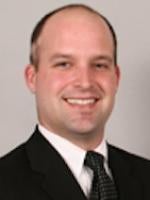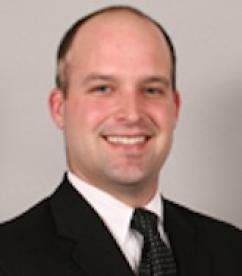The U.S. Supreme Court has recently taken a keen interest in whether certain subject matter is eligible to be patented under U.S. law1. In June 2013, the Supreme Court held in Myriad2 that patents on naturally-occurring DNA sequences (often referred to as “gene patents”) are not patent-eligible subject matter under 35. U.S.C. § 101. In response to this decision, the United States Patent and Trademark Office (“USPTO”) issued a Guidance on March 4, 2014, to assist patent examiners in determining whether a claim is directed to patent-eligible subject matter under 35 U.S.C. §101. The Guidance replaces the preliminary guidance of June 13, 20133. The Guidance makes clear that the USPTO will reject claims directed to naturally-occurring substances if those substances are not significantly different from how they exist “in nature.”
Although the Guidance arises from the Myriad and Prometheus4 decisions, which related to the patentability of DNA sequences and diagnostic methods, the Guidance states that a broader array of inventions are impacted by the Supreme Court’s decisions. Examples of subject matter that falls within the scope of the Guidance include: “chemicals derived from natural sources (e.g., antibiotics, fats, oils, petroleum derivatives, resins, toxins, etc.); foods (e.g., fruits, grains, meats, vegetables); metals and metallic compounds that exist in nature; minerals; natural materials (e.g., rocks, sands, soils); nucleic acids; organisms (e.g., bacteria, plants, multicellular animals); proteins and peptides; and other substances found in or derived from nature.”
The Guidance sets forth a flow chart to assist examiners in determining whether claims are directed to patent-eligible subject matter. If the claims are directed to a process, machine, manufacture, or composition of matter, the examiner is tasked with answering whether the claim recites or involves a so-called judicial exception—“laws of nature/natural principles, natural phenomena, and/or natural products.” Examiners are encouraged to liberally view the claimed invention as reciting or involving a judicial exception. If the examiner believes or is unsure whether a claim recites or involves a judicial exception, the Guidance states that a claim only qualifies as patent-eligible subject matter if the claim as a whole recites something significantly different than a judicial exception. To analyze whether an invention is “significantly different,” the Guidance sets forth several factors that are relevant to determining whether the claims contain patent-eligible subject matter under 35 U.S.C. § 101. For example, the following claim features weigh in favor of finding the claims contain patent-eligible subject matter:
-
Recitation of a non-naturally-occurring product(s) that is markedly different in structure from naturally-occurring products.
-
Elements or steps that impose meaningful limits on claim scope, i.e., the elements/steps narrow the scope of the claim so that others are not substantially foreclosed from using the judicial exception.
-
Elements or steps that relate to the judicial exception in a significant way, i.e., the elements/steps are more than nominally, insignificantly, or tangentially related to the judicial exception(s).
-
Elements or steps that do more than describe the judicial exception(s) with general instructions to apply or use the judicial exception(s).
-
Elements or steps that include a particular machine or transformation of a particular article, where the particular machine/transformation implements one or more judicial exception(s) or integrates the judicial exception(s) into a particular practical application. (See MPEP 2106(II)(B)(1) for an explanation of the machine or transformation factors).
-
Elements or steps that add a feature that is more than well-understood, purely conventional or routine in the relevant field.
The Guidance also lists related opposite factors that would weigh against finding the claims directed to patent-eligible subject matter.
The Guidance is clear that the prior strategy of using “isolated,” “recombinant,” or “synthetic” in a claim to distinguish the claimed invention from natural products would not remove the claim from this factor-based eligibility inquiry.
The balance of the Guidance contains examples of claims and hypotheticals to demonstrate the use of the factors. The examples are focused on the following scenarios:
-
Composition/Manufacture Claim Reciting a Natural Product
-
Composition vs. Method Claims, Each Reciting a Natural Product
-
Manufacture Claim Reciting Natural Products
-
Composition Claim Reciting Multiple Natural Products
-
Composition vs. Method Claim, Each Reciting Two Natural Products
-
Process Claim Involving a Natural Principle and Reciting Natural Products
-
Process Claim Involving a Natural Principle
-
Process Claim Reciting an Abstract Idea and a Natural Product
Clients and practitioners would be well served to evaluate whether any of these examples are similar to the desired claims prior to drafting the patent specification and prepare a prosecution strategy to either (1) avoid a 35 U.S.C. § 101 rejection or (2) formulate arguments based on the factors within the Guidance in anticipation of an examiner’s rejection of the claim(s) under 35 U.S.C. § 101.
1 See, e.g., NGE Client Alert “Federal Circuit Fails to Clarify Software Patent Eligibility,” May 15, 2013, and NGE Client Alert “U.S. Supreme Court Holds Genes Cannot Be Patented but Other Strategies Can Be Pursued,” June 26, 2013.
2 Association for Molecular Pathology v. Myriad Genetics, 569 U.S. __, 133 S. Ct. 2107, 2116, 106 USPQ2d 1972 (2013).
3 The new Guidance does not impact the examination of claims directed to an abstract idea (usually involving claims to business methods or software), which will continue to be evaluated through the guidance set forth in MPEP § 2106(II).
4 Mayo Collaborative Services v. Prometheus Laboratories, Inc. 566 U.S. __, 132 S. Ct. 1289, 101 USPQ2d 1961 (2012).




 i
i


